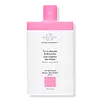What's inside
What's inside
 Key Ingredients
Key Ingredients

 Benefits
Benefits

 Concerns
Concerns

 Ingredients Side-by-side
Ingredients Side-by-side

Water
Skin ConditioningGlycolic Acid
BufferingCoconut Alkanes
EmollientSodium Hydroxide
BufferingHydroxyethyl Acrylate/Sodium Acryloyldimethyl Taurate Copolymer
Emulsion StabilisingPropanediol
SolventCetearyl Alcohol
EmollientSqualane
EmollientCetearyl Olivate
Sorbitan Olivate
EmulsifyingSclerocarya Birrea Seed Butter
EmollientButyrospermum Parkii Butter
Skin ConditioningCamellia Sinensis Seed Oil
HumectantPassiflora Edulis Seed Oil
EmollientNiacinamide
SmoothingSodium PCA
HumectantLactic Acid
BufferingTartaric Acid
BufferingSclerocarya Birrea Seed Oil
HumectantCocos Nucifera Fruit Juice
EmollientAdansonia Digitata Seed Oil
EmollientSchinziophyton Rautanenii Kernel Oil
EmollientCoco-Caprylate/Caprate
EmollientCitrullus Lanatus Seed Oil
EmollientCocos Nucifera Oil
MaskingTapioca Starch
Vitis Vinifera Juice Extract
AntioxidantPrunus Armeniaca Kernel Oil
MaskingSimmondsia Chinensis Seed Oil
EmollientXimenia Americana Seed Oil
EmollientSodium Hyaluronate Crosspolymer
HumectantAllantoin
Skin ConditioningQuercetin
AntioxidantLinoleic Acid
CleansingLinolenic Acid
CleansingPrunus Amygdalus Dulcis Oil
Skin ConditioningPersea Gratissima Oil
Skin ConditioningTocopherol
AntioxidantCitric Acid
BufferingSorbitan Isostearate
EmulsifyingPolysorbate 60
EmulsifyingChlorphenesin
AntimicrobialPhenoxyethanol
PreservativeCaprylyl Glycol
EmollientPotassium Sorbate
PreservativePentylene Glycol
Skin ConditioningSodium Carbonate
BufferingSodium Chloride
MaskingEthylhexylglycerin
Skin ConditioningWater, Glycolic Acid, Coconut Alkanes, Sodium Hydroxide, Hydroxyethyl Acrylate/Sodium Acryloyldimethyl Taurate Copolymer, Propanediol, Cetearyl Alcohol, Squalane, Cetearyl Olivate, Sorbitan Olivate, Sclerocarya Birrea Seed Butter, Butyrospermum Parkii Butter, Camellia Sinensis Seed Oil, Passiflora Edulis Seed Oil, Niacinamide, Sodium PCA, Lactic Acid, Tartaric Acid, Sclerocarya Birrea Seed Oil, Cocos Nucifera Fruit Juice, Adansonia Digitata Seed Oil, Schinziophyton Rautanenii Kernel Oil, Coco-Caprylate/Caprate, Citrullus Lanatus Seed Oil, Cocos Nucifera Oil, Tapioca Starch, Vitis Vinifera Juice Extract, Prunus Armeniaca Kernel Oil, Simmondsia Chinensis Seed Oil, Ximenia Americana Seed Oil, Sodium Hyaluronate Crosspolymer, Allantoin, Quercetin, Linoleic Acid, Linolenic Acid, Prunus Amygdalus Dulcis Oil, Persea Gratissima Oil, Tocopherol, Citric Acid, Sorbitan Isostearate, Polysorbate 60, Chlorphenesin, Phenoxyethanol, Caprylyl Glycol, Potassium Sorbate, Pentylene Glycol, Sodium Carbonate, Sodium Chloride, Ethylhexylglycerin
Salicylic Acid 1%
MaskingWater
Skin ConditioningSodium C14-16 Olefin Sulfonate
CleansingJojoba Esters
EmollientGlycerin
HumectantCocamidopropyl Betaine
CleansingAcrylates Copolymer
PEG-200 Hydrogenated Glyceryl Palmate
CleansingUrea
BufferingYeast Amino Acids
HumectantTrehalose
HumectantInositol
HumectantTaurine
BufferingBetaine
HumectantRetinyl Palmitate
Skin ConditioningPhoenix Dactylifera Seed
Skin ConditioningDipotassium Glycyrrhizate
HumectantButylene Glycol
HumectantCamellia Oleifera Leaf Extract
AstringentTocopheryl Acetate
AntioxidantZinc Gluconate
Skin ConditioningAscorbic Acid
AntioxidantChitosan
Propyl Gallate
AntioxidantGlycolic Acid
BufferingSodium Hydroxide
BufferingHydrogen Peroxide
AntimicrobialMenthol
MaskingPEG-7 Glyceryl Cocoate
EmulsifyingSodium Benzoate
MaskingSodium Bisulfite
AntioxidantDisodium EDTA
Propylene Carbonate
SolventBenzoic Acid
MaskingDehydroacetic Acid
PreservativePropanediol
SolventPvp
Emulsion StabilisingBenzyl Salicylate
PerfumingHexyl Cinnamal
PerfumingButylphenyl Methylpropional
PerfumingParfum
MaskingCI 42090
Cosmetic ColorantCI 60730
Cosmetic ColorantSalicylic Acid 1%, Water, Sodium C14-16 Olefin Sulfonate, Jojoba Esters, Glycerin, Cocamidopropyl Betaine, Acrylates Copolymer, PEG-200 Hydrogenated Glyceryl Palmate, Urea, Yeast Amino Acids, Trehalose, Inositol, Taurine, Betaine, Retinyl Palmitate, Phoenix Dactylifera Seed, Dipotassium Glycyrrhizate, Butylene Glycol, Camellia Oleifera Leaf Extract, Tocopheryl Acetate, Zinc Gluconate, Ascorbic Acid, Chitosan, Propyl Gallate, Glycolic Acid, Sodium Hydroxide, Hydrogen Peroxide, Menthol, PEG-7 Glyceryl Cocoate, Sodium Benzoate, Sodium Bisulfite, Disodium EDTA, Propylene Carbonate, Benzoic Acid, Dehydroacetic Acid, Propanediol, Pvp, Benzyl Salicylate, Hexyl Cinnamal, Butylphenyl Methylpropional, Parfum, CI 42090, CI 60730
 Reviews
Reviews

Ingredients Explained
These ingredients are found in both products.
Ingredients higher up in an ingredient list are typically present in a larger amount.
Glycolic Acid is arguably the most famous alpha hydroxy acid (AHA) with tons of research backing its benefits.
It is found naturally in sugar cane but the form used in skincare is usually synthetic for purity and stability.
Glycolic acid removes the top layer of dead skin cells to allow newer and fresher ones to emerge.
AHAs work by breaking down the structural “glue” that holds old skin cells in place. When that buildup is gone, your skin can renew itself more efficiently.
Research also shows glycolic acid stimulates collagen production, helping to firm and thicken the skin over time. This is one of its biggest advantages over other AHAs.
Overall, glycolic acid helps with:
Fun fact: Glycolic acid boosts skin hydration by helping it produce molecules that increase hyaluronic acid naturally.
To work best, glycolic acid products should have a pH between 3-4 (that’s where exfoliation is most effective but still gentle on skin).
The pH and concentration of a product are key to its effectiveness:
It is normal to feel a slight stinging sensation when using glycolic acid. This usually fades as your skin adjusts.
Because glycolic acid has the smallest molecular size in the AHA family, it can penetrate deeper, which enhances its effectiveness but also makes it more likely to irritate sensitive skin.
If your skin is very sensitive or prone to rosacea, glycolic acid may be too strong; in that case, try milder options like lactic acid or a PHA instead.
Recent studies suggest glycolic acid might even help protect against UV damage. But don’t skip sunscreen! Freshly exfoliated skin is more sensitive to the sun.
Glycolic acid is a skincare superstar. It smooths, brightens, hydrates, and firms the skin. Unless you’re highly sensitive, it’s well worth adding to your routine.
Read more about some other popular AHA's here:
Learn more about Glycolic AcidPropanediol is an all-star ingredient. It softens, hydrates, and smooths the skin.
It’s often used to:
Propanediol is not likely to cause sensitivity and considered safe to use. It is derived from corn or petroleum with a clear color and no scent.
Learn more about PropanediolSodium Hydroxide is also known as lye or caustic soda. It is used to adjust the pH of products; many ingredients require a specific pH to be effective.
In small amounts, sodium hydroxide is considered safe to use. However, large amounts may cause chemical burns due to its high alkaline.
Your skin has a natural pH and acid mantle. This acid mantle helps prevent harmful bacteria from breaking through. The acid mantle also helps keep your skin hydrated.
"Alkaline" refers to a high pH level. A low pH level would be considered acidic.
Learn more about Sodium HydroxideWater. It's the most common cosmetic ingredient of all. You'll usually see it at the top of ingredient lists, meaning that it makes up the largest part of the product.
So why is it so popular? Water most often acts as a solvent - this means that it helps dissolve other ingredients into the formulation.
You'll also recognize water as that liquid we all need to stay alive. If you see this, drink a glass of water. Stay hydrated!
Learn more about Water